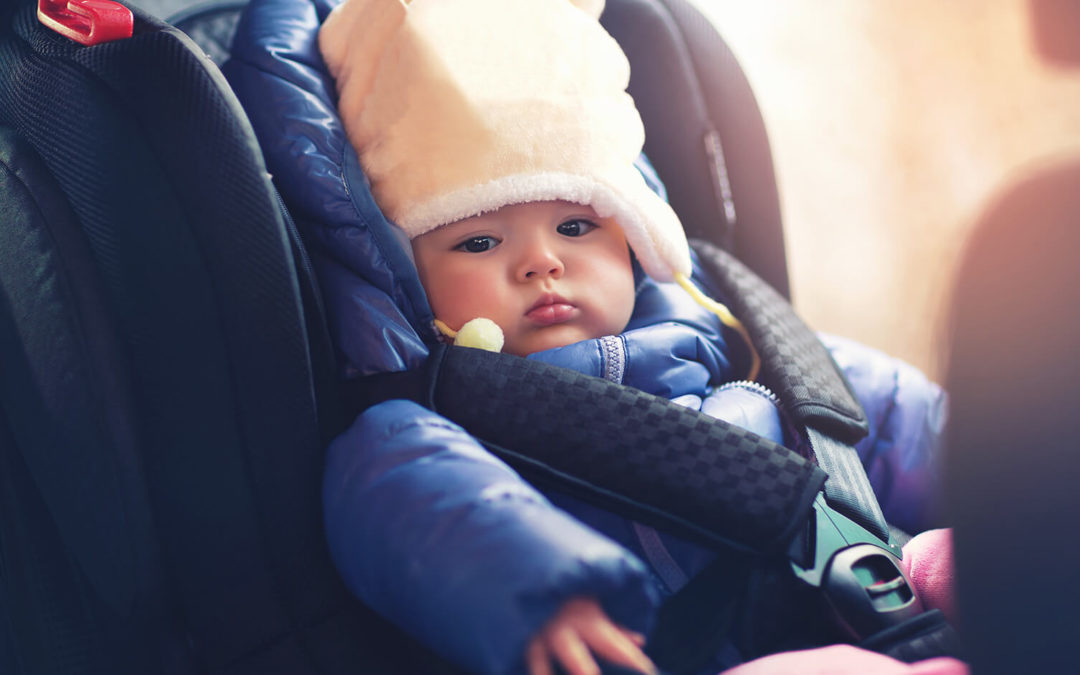Child safety has come a long way. Car seats are good example of how things have changed. When I was a kid, no one used car seats. My parents knew it was dangerous to have us unrestrained, but very few car seats were on the market then, and it was not the law that we needed them. It is now the law that all children be restrained in car seats, and car seats are readily available.
The Nebraska child passenger restraint law is as follows:
Drivers can be stopped and ticketed for:
- Children 5 and under not riding in federally approved child safety seats
- Children under 18 years old riding in cargo areas
- Childcare provider not transporting all children securely in appropriate seats
Drivers will be ticketed if pulled over for another offense if:
- Persons of any age in front seat not restrained
- Children aged 6-18 are not riding secured in an appropriate restraint
- Any passengers in the car are not in an appropriate restraint and the driver holds a provisional or School permit
According to the Nebraska Department of Motor Vehicles, in 2006, 16 children were killed, and 1,656 children were injured on Nebraska roads. Car seats can greatly decrease the risk of death in a car accident. According to the National Safe Kids Campaign, car seats reduce the risk of death by 71% in infants and 54% in children aged 1-4, and they decrease the need for hospitalization by 69% in children ages 4 and under.
When certified car seat inspectors check car seat installations, they find that as many as 89% of them are installed incorrectly. There are many different car seats on the market, and it is important to read the instructions that come with the seat carefully, as well as the vehicle owner’s manual. It is also important that children are latched in snugly and facing the right direction. To help with this, there are car seat check-up events in Nebraska. The times and locations of these events can be found by calling 1-800-745-9311 or by going to the following web site: www.nsp.state.ne.us.
Every car seat is different, and no one set of instructions is good for all seats, but Safe Kids Worldwide has a few recommendations for each age group of children. I have listed those below:
General guidelines for all car seats:
- All children should ride in the back seat and never in front of an air bag.
- Straps should be snug (so snug that you can’t pinch the strap together.)
- The car seat should be tightly secured into the car (the seat should move less than one inch side to side when pulled on at the restraint path.)
- Parents should periodically check to make sure that car seats have not been recalled by companies. Registering your child safety restraint allows manufacturers to contact you if there has been a recall.
- Car seats should be replaced if they have been in an accident. Avoid buying used seats, as it is impossible to know if seats were in a crash; also, often they do not have complete instructions and may have been recalled.
Children under age 1 and weighing less than 20 pounds:
- These babies should ride in a rear facing car seat appropriate for size and age.
Children over age 1 and weighing 20-40 pounds:
- The child should face backwards in a seat appropriate for size and age. (Studies suggest children are safest riding backwards as long as possible. If the seat allows for it, children may continue to stay rear facing if older than one year and over 20 pounds.)
Children fewer than 4 feet 9 inches tall and weighing more than 40 pounds:
- These children should always ride in a booster seat with lap belt and shoulder strap, and never in a lap belt only.
- The lap belt should be low on the hips and not over the stomach.
- The shoulder belt should be across the shoulder, and not across the neck, under the arm, or behind the back.
- The seat belt should be snug, flat and comfortable.
Children over 4 feet 9 inches and over 80 pounds:
- These kids should always use a seat belt with shoulder strap and lap belt.
- The lap belt should be low on the hips and not over the stomach.
- The shoulder belt should be across the shoulder.
- The child should keep his/her back firmly against the seat back.
- Use a booster if the seat belt does not fit correctly.
I think the most important thing to know about child safety seats is that they save lives when used correctly, but most people do not use them correctly. I strongly encourage parents to read car seat instructions well and call or visit the resources above and have their children’s car seat inspected. Many local hospitals and clinics also often have trained car seat inspectors who may help inspect car seats.
The best car seat is the one that fits your child, fits your car and is used correctly every time.

